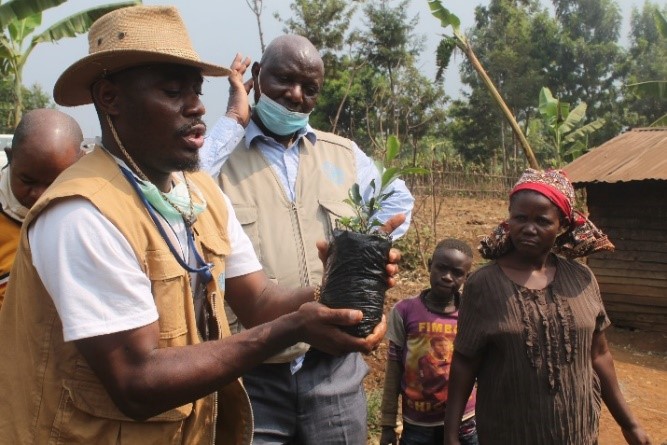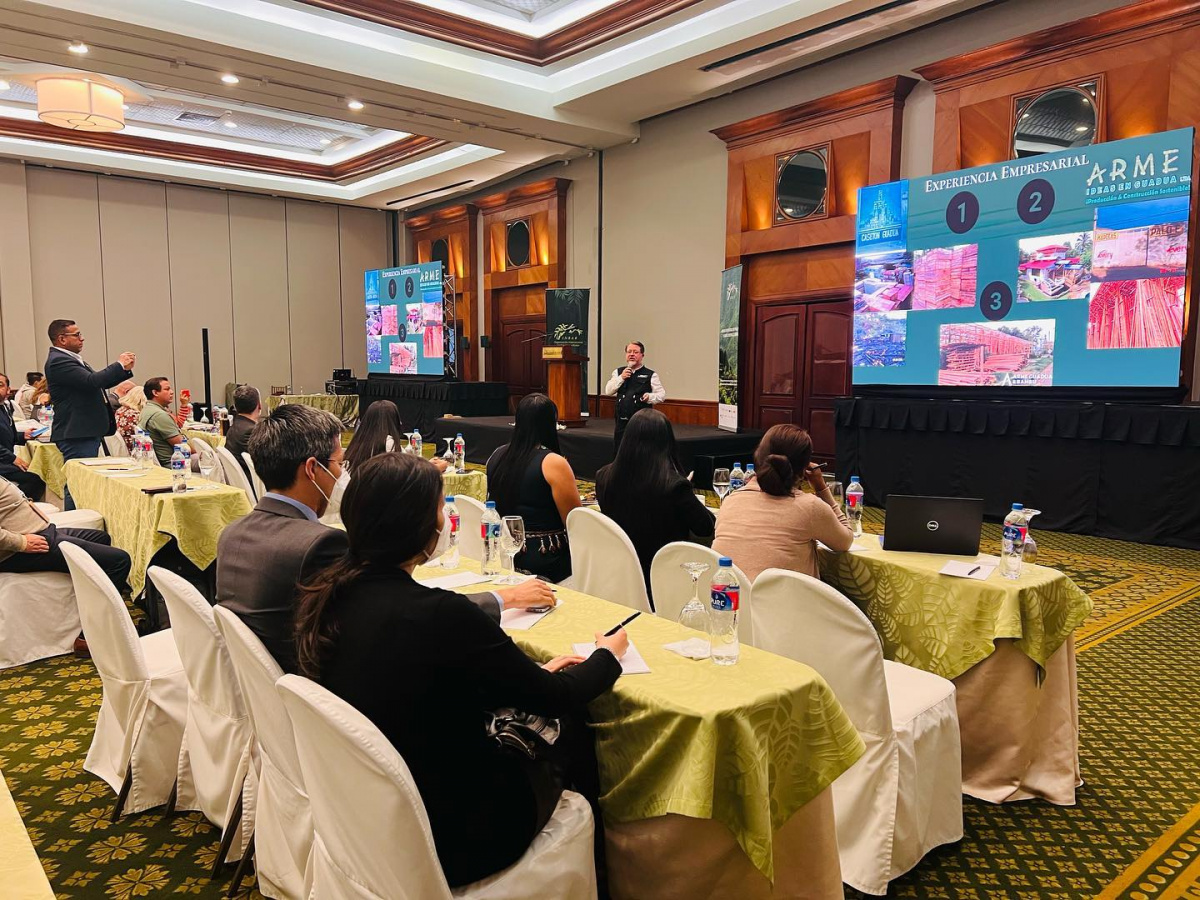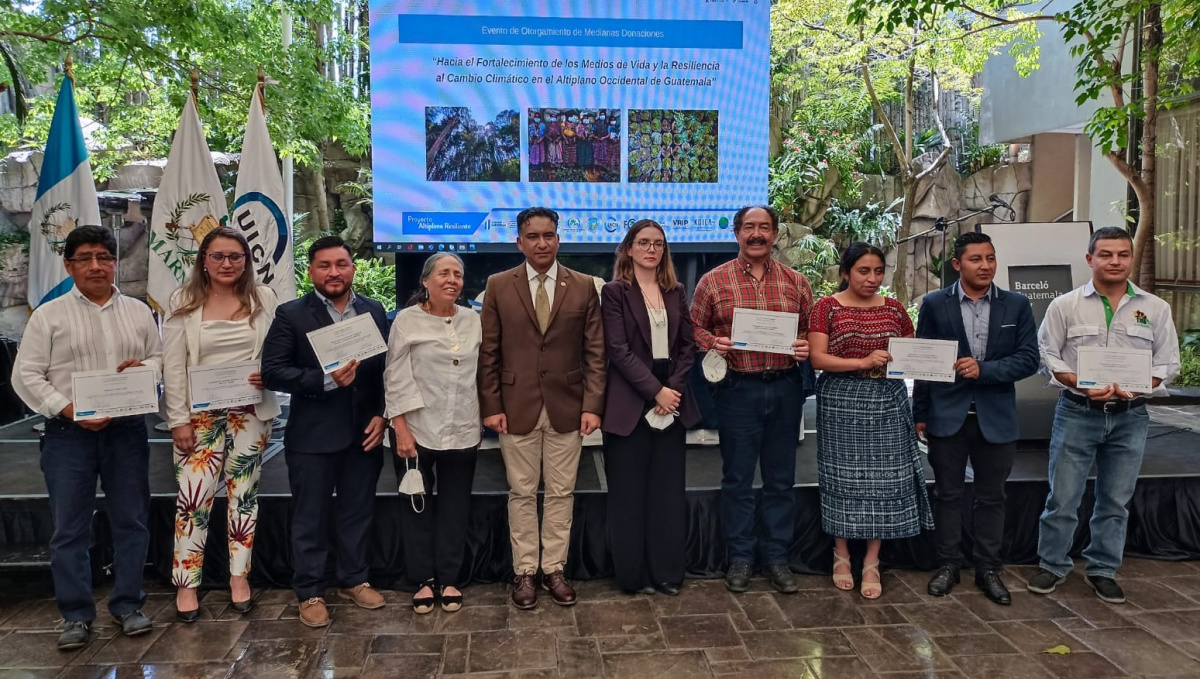The Restoration Initiative: A Democratic Republic of the Congo story
Restoring the landscapes of South Kivu Province in the Democratic Republic of the Congo

Photo: TRI / FAO-DRC
The mountainous region of South Kivu Province in eastern Democratic Republic of the Congo (DRC), which shares a border with the countries of Rwanda and Burundi, is a land of promise and despair. Promise in that the region contains abundant natural resources including two large freshwater lakes and mineral resources, as well as places of immense natural beauty and splendour, including some of the last remaining habitat for eastern lowland gorillas, African bush elephants, and other threatened species. Despair in that this region has been beset with intermittent war and violence for over 25 years.
In this context, working to restore degraded lands can seem like a dream – far removed from the reality on the ground. However, restoration remains an essential undertaking and priority, with South Kivu Province one of the most densely populated and poorest provinces in DRC, and a place where these pressures, together with poor management practices including overgrazing and unsustainable timber and fuelwood harvesting, have resulted in significant forest and landscape degradation.
It is here that TRI DRC is working to bring positive change, helping stakeholders to design and put into place restoration interventions that meet the needs of local communities and landscapes. One way is by supporting the development of a Provincial Forest and Landscape Restoration Strategy. This strategy lays out priority sites and approaches for restoration, including assisted natural regeneration, agroforestry, and protection of the watershed through anti soil-erosion plantings and other measures.
The strategy has been informed by an assessment of land degradation and restoration opportunities, performed in 2020, using ROAM. As part of this assessment, two field missions were organized to consult with a variety of stakeholders in the Chiefdoms of Kabare and Ngweshe, including traditional leaders, indigenous peoples, civil society, NGOs, research organizations and the private sector. Together with state-of-the art land cover analysis using satellite imagery and geospatial software, the assessment found that around 25 percent of land in the province shows signs of degradation, and that restoration opportunities are found on some 2 million hectares in total.
A focus of the provincial restoration strategy is in identifying restoration options and providing recommendations to increase the productivity and sustainability of agriculture, forestry and fishing. For example, the strategy provides recommendations on integrated land-use planning at the provincial and territorial levels and on technical support needed to implement and monitor FLR interventions on the ground. Another important need identified by stakeholders is the development of sustainable financing mechanisms for FLR that provide sufficient funding for needed follow-up maintenance following initial plantings.
The provincial restoration strategy will be used in a number of ways. It will inform Local Development Plans – five-year strategic plans that guide the economic development in the decentralized territorial entities – including those under revision with support from the German Government development agency GIZ in the Chiefdoms of Kabare and Ngweshe. One finding from an evaluation of prior local development plans was that these plans did not provide for sufficient integration of environmental concerns – a shortcoming that stakeholders hope will be addressed in the new local development plans. Other uses for the Provincial Forest and Landscape Restoration Strategy include support for advocacy efforts at the national level to enhance budget allocations for restoration, support for mobilization of funding from international funding mechanisms, and support for other provinces in developing their own tailored restoration strategies.



